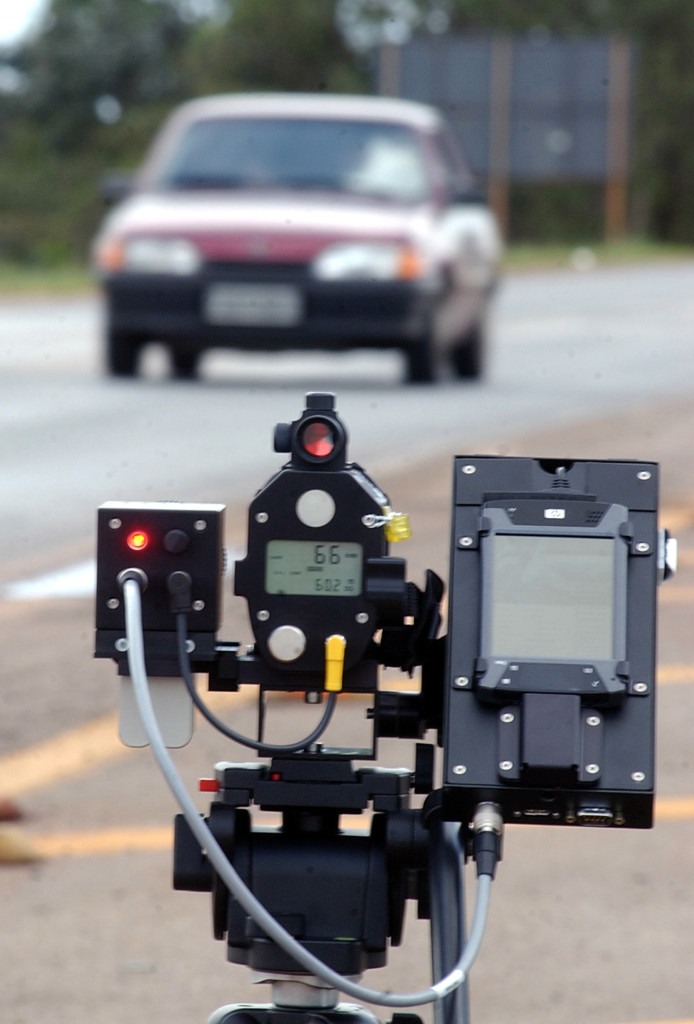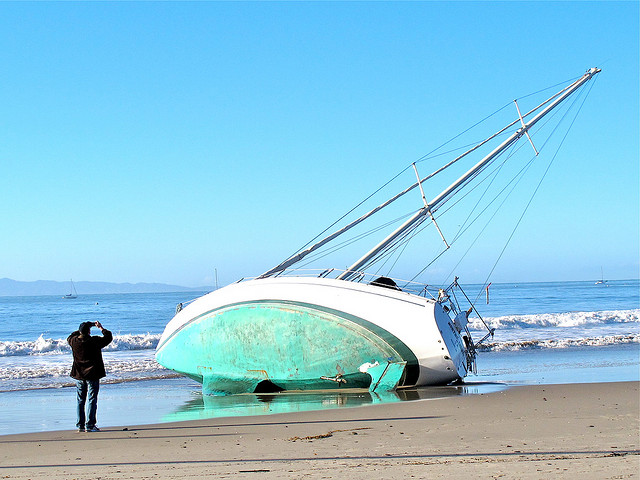Archive for March, 2014
An Injection Of Absurdity
Things are cyclic, but there seems to be no end to the crusade of continuous improvement. (Does anyone remember how the Crusades turned out?) If only to take the edge off, there needs to be an injection of absurdity.
There’s no pressure with absurdity – no one expects an absurd idea to work. If you ask for an innovative idea, you’ll likely get no response because there’s pressure from the expectation the innovative idea must be successful. And if you do get a response, you’ll likely get served a plain burrito of incremental improvement garnished with sour cream and guacamole to trick your eye and doused in hot sauce to trick your palate. If you ask for an absurd idea, you get laughter and something you’ve never heard before.
When drowning in the sea of standard work, it takes powerful mojo to save your soul. And the absurdity jetpack is the only thing I know with enough go to launch yourself to the uncharted oasis of new thinking. Immense force is needed because continuous improvement has serious mass – black hole mass. Like with light, a new idea gets pulled over the event horizon into the darkness of incremental thinking. But absurdity doesn’t care. It’s so far from the center lean’s pull is no match.
But to understand absurdity’s superpower is to understand what makes things absurd. Things are declared absurd when they cut against the grain of our success. It’s too scary to look into the bright sun of our experiences, so instead of questioning their validity and applicability, the idea is deemed absurd. But what if the rules have changed and the fundamentals of last year’s success no longer apply? What if the absurd idea actually fits with the new normal? In a strange Copernican switch, holding onto to what worked becomes absurd.
Absurd ideas sometimes don’t pan out. But sometimes they do. When someone laughs at your idea, take note – you may be on to something. Consider the laughter an artifact of misunderstanding, and consider the misunderstanding a leading indicator of the opportunity to reset customer expectations. And if someone calls your idea absurd, give them a big hug of thanks, and get busy figuring out how to build a new business around it.
Retreating From Activity To Progress
 Every day is a meeting-to-meeting sprint with no time for some of the favorite fundamentals like the bathroom and food. Though crazy, it’s the norm and no longer considered crazy. But it is crazy. When you’re too busy to answer emails that’s one thing, but when you’re too busy to realize answering email isn’t progress, that’s a problem.
Every day is a meeting-to-meeting sprint with no time for some of the favorite fundamentals like the bathroom and food. Though crazy, it’s the norm and no longer considered crazy. But it is crazy. When you’re too busy to answer emails that’s one thing, but when you’re too busy to realize answering email isn’t progress, that’s a problem.
Our in-boxes are full; our plates are full; our calendars are full. But our souls are empty.
You’re clear on what must get done over the next 48 hours, but the pace is too fast to know why the work is important in the first place. (One of the fastest way to complete a task is to deem it unimportant and don’t do it – all of the done with none of the work.) But it’s worse. It’s too fast to do the work no one is asking you to do, and it’s too fast to do the work you were born to do.
We have confused activity with progress; and with all the activity, we’ve forgotten what it feels like to think. We need a retreat.
The perfect retreat eliminates distractions and gives people time to think. After a nice Sunday flight into Boston, it’s a calm two hour coach ride to rural New Hampshire. (Done right, a coach is soothing.) After pickup it’s a fifteen minute drive to a remote trail head. With a pack on your back, it’s a five minute walk to a big, remote cabin. No cell service, no power, no interruptions.
As you enter the cabin, you unload all your electronics into bin (Yes, your smart phone goes in the bin.) which is locked away for the remainder of the retreat. You race to get the best bunk, drop your gear, and share a meal with your fellow over achievers. (Y es, the non-disclosures are signed so you can actually talk to each other.)
The first day is all about recognizing the discomfort that comes with no distractions and your natural tendency to create distraction to sooth your discomfort. The objective is to help you remember what if feels like to have more than 30 seconds of uninterrupted time. Then, once you remember, it’s time to actually think.
There are no video conferencing capabilities (or electricity) in the cabin, so all work is done the old-fashioned way – face-to-face. The objective is to help you remember the depth, complexity, and meaning that come when working with actual faces. Yes, there’s good facilitated discussion, but the topics aren’t as important as remembering how to share and trust.
There is ritualistic work of cooking, cleaning, splitting the wood, and stoking the fire. The objective is to remember what it feels like to connect the mind to the body and to connect with others. And, there’s a group hike every day to remember what it feels like to be grounded in the natural world. (Sometimes we forget the business world is actually part of the natural world.)
After the rituals and hikes have done their magic, the right discussions start to emerge, and deep contemplation dances with deep conversation. Though there’s a formal agenda, no matter. With the group’s awaking, the right agenda emerges.
At the end of the retreat, there’s immense sadness. This is a sign of importance and deep learning. And after the hugs and tears, there’s a spontaneous commitment to do it next year. With eyes dried, it’s off the bus station and then to the airport.
You don’t have to wait for the perfect retreat to start your journey. Start your practice by carving out an hour a day and set a recurring meeting with yourself and turn off your email. And start by asking yourself why. Those two tricks will set you on your way.
And if you’re interested in a real retreat, let me know.
Slower Can Be Faster
 There are two types of drivers – those that speed as a way of life and those that speed when they forget to pay attention. But for both, speed kills.
There are two types of drivers – those that speed as a way of life and those that speed when they forget to pay attention. But for both, speed kills.
For the everyday speeder, life is an opportunity to push limits and break rules. Every highway is a Formula One course; every traffic light an opportunity to run the red light. They know every speed trap and have honed their drag racing tactics, and, mostly, they don’t get caught. And driving this way year-on-year, they no longer realize they’re speeding and no longer see it as dangerous behavior. They see themselves as invincible and even take pride in their reckless behavior, and that’s dangerous.
If you’ve made the product before, or you’ve done something similar, you know all the traps and a fast business decision isn’t bad. But fast all the time isn’t the answer. When you’re in country that drives on the wrong side of the road and you approach a round-about, slower is better. When you don’t understand the road signs; when your left-right decisions are backward; and you don’t know how to negotiate the big circle of traffic, it’s pretty clear slower is better. But if you’ve been successful with your habitual speeding, you’ll likely accelerate into the traffic circle, rear-end someone, and flip yourself end others into a deadly pileup. And if you survive, likely curse those stupid drivers who didn’t know enough to get out of your way.
But there’s a simpler case that seals it. When you don’t know where you’re going, clicking off miles on the odometer isn’t progress, it’s just activity (that burns fuel). In these conditions, going fast in the wrong directions is worse than not driving at all. When you’re lost, it doesn’t make sense to speed.
The conscientious speeder keeps two hands on the wheel and maintain safe separation distance at upwards of ten car lengths. For them, every day is an opportunity to check the tire pressure and check the dipstick for oil. They plan out the trip, check the road conditions, and pay attention. (Cell phones off for these folks.)
Today’s cars are quiet and smooth which makes for calm, comfortable driving. But they’re also powerful, and, even with good intentions, a brief lapse in attention can generate breakneck speed. The conscientious speeder backs off the accelerator as soon as attention returns, and the danger is low. But, when a lapse in attention overlaps with a quick change in driving conditions (a deer runs across the highway, or the car in front jacks on the breaks), you can’t react quickly enough, and that’s dangerous.
If you’ve made the product before, or you’ve done something similar, and you checked the tire pressure, a lapse in attention once in a while isn’t bad. But doing the same drive every day and lulling yourself into a road trip stupor isn’t the answer. When you’re cruising over the limit on a well-lit, dead-straight highway, in your serenity you can easily speed past your exit without knowing. And the faster you’re going, the more exits you’ll miss until you realize it.
Sometimes, when the conditions are right, slower is faster.
The Importance Of Knowing Why You’re In The Boat
Whether at work or home, there are highs and lows. And you’re not getting special treatment, that’s how it is for everyone. And it’s a powerful fundamental, so don’t try to control it, ride it.
When the sailing is smooth, at some point it won’t be – the winds change, that’s what they do. And when you’re suddenly buffeted from a new direction, you take action. But what action? More sail or less? Port or starboard? Heave the anchor or abandon ship? It depends.
Your actions depend on your why. Regardless of wind or tide, your why points where it points and guides your actions. Much like magnetic north doesn’t move if you spin your compass, your long term why knows where it points. If the storm on the horizon is dead ahead, you go around it. But it’s a balance – deviate to skirt the storm, but do it with your long term destination in mind. If you know your long term why, the best course heading is clear.
Often you set sail without realizing you don’t have your why battened down and stowed. When you sail where you sailed last time, you know the landmarks and use them to navigate. You can unknowingly leave your why at the pier and still get to your destination. But when you’re blown out to sea and can no longer see the landmarks, your moral compass, your long term why, is the only way to tack and jibe toward your destination.
Before you set sail, it’s best to know why you’re in the boat.


 Mike Shipulski
Mike Shipulski